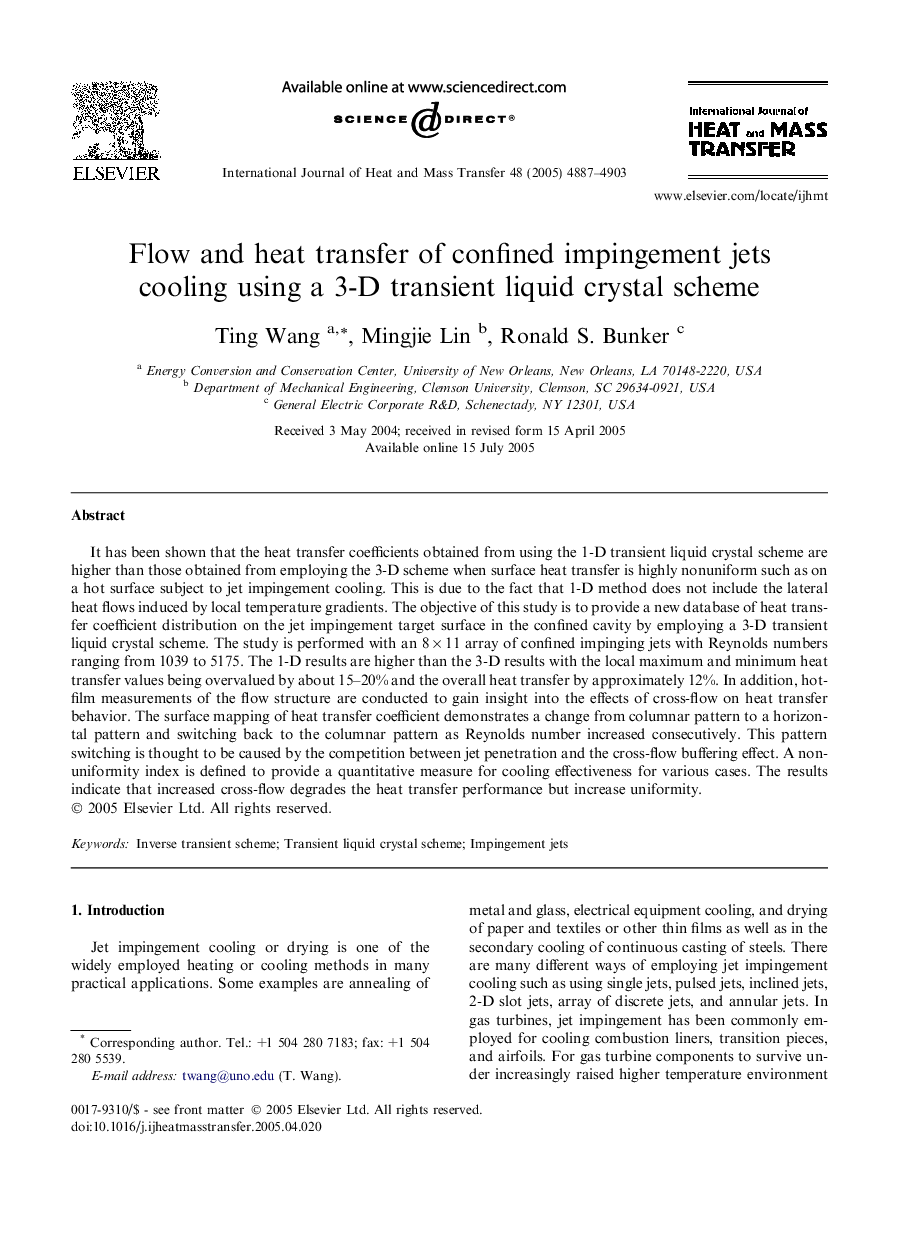| Article ID | Journal | Published Year | Pages | File Type |
|---|---|---|---|---|
| 662151 | International Journal of Heat and Mass Transfer | 2005 | 17 Pages |
Abstract
It has been shown that the heat transfer coefficients obtained from using the 1-D transient liquid crystal scheme are higher than those obtained from employing the 3-D scheme when surface heat transfer is highly nonuniform such as on a hot surface subject to jet impingement cooling. This is due to the fact that 1-D method does not include the lateral heat flows induced by local temperature gradients. The objective of this study is to provide a new database of heat transfer coefficient distribution on the jet impingement target surface in the confined cavity by employing a 3-D transient liquid crystal scheme. The study is performed with an 8Â ÃÂ 11 array of confined impinging jets with Reynolds numbers ranging from 1039 to 5175. The 1-D results are higher than the 3-D results with the local maximum and minimum heat transfer values being overvalued by about 15-20% and the overall heat transfer by approximately 12%. In addition, hot-film measurements of the flow structure are conducted to gain insight into the effects of cross-flow on heat transfer behavior. The surface mapping of heat transfer coefficient demonstrates a change from columnar pattern to a horizontal pattern and switching back to the columnar pattern as Reynolds number increased consecutively. This pattern switching is thought to be caused by the competition between jet penetration and the cross-flow buffering effect. A nonuniformity index is defined to provide a quantitative measure for cooling effectiveness for various cases. The results indicate that increased cross-flow degrades the heat transfer performance but increase uniformity.
Related Topics
Physical Sciences and Engineering
Chemical Engineering
Fluid Flow and Transfer Processes
Authors
Ting Wang, Mingjie Lin, Ronald S. Bunker,
